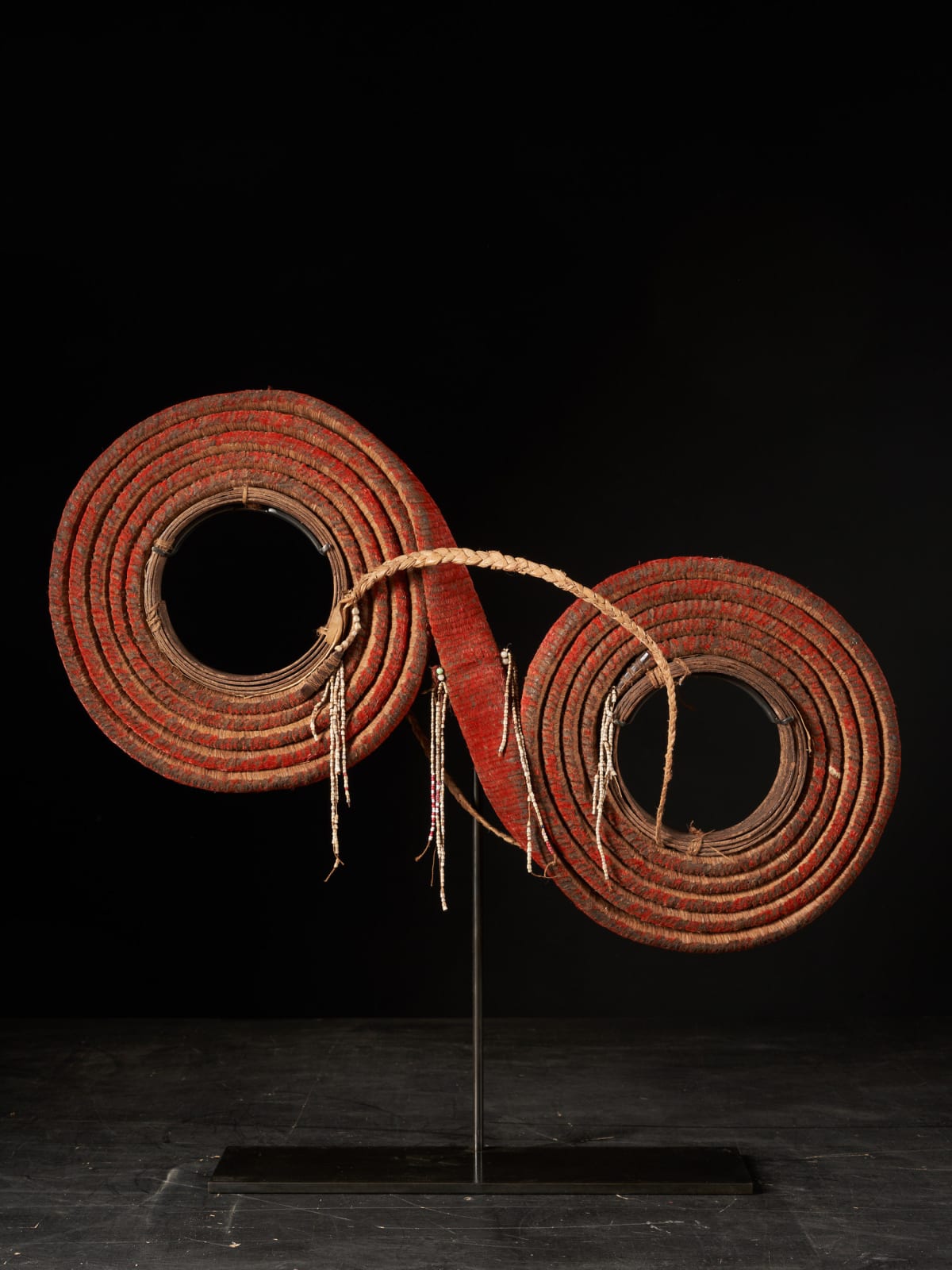Santa Cruz People,Solomon Islands.Teveau Feather Currency
first half 20th
Organic material
75 x 52 cm
29 1/2 x 20 1/2 in
29 1/2 x 20 1/2 in
1706
Vendu
Feather money was used on the Santa Cruz archipelago, a remote group forming part of the Solomon Islands for a very long time. The feather money consisted of a 9-meter strip of plant fibers covered with the small scarlet honeyeater (Myzomela Cardinalis) and often took the form of a double coil. One double coil was a trading unit that could not be subdivided and consisted of around 50 to 60 thousand red feathers. Production of the feather money was a 3-stage process. Each stage was carried out by a specialist who had received the magic skills from the spirits. The technique was passed on from father to son. In the first stage, the scarlet honeyeaters were caught by a bird-catcher, who painted a branch with a mulberry tree sap to act as glue. Once the bird was stuck in the glue, its feathers were plucked. A second specialist was responsible for making the platelets (called lendu) composing the coils using stiff pigeon feathers. The red feathers were then attached to each platelet. Altogether, it took 1500 to 1800 of these platelets to form 1 coil. Each coil took around 700 hours to make. The platelets were then taken to the coil-maker, who bound them all together to form a 9-meter-long coil. For storage, the coils were packed in leaves and cloths together with amulets and hung about 2 meters above the fireplace. One of the most notable uses of feather money was in payment of the bride price... Feather money has fallen into disuse since the beginning of the 20th century.
Join our mailing list
* denotes required fields
We will process the personal data you have supplied in accordance with our privacy policy (available on request). You can unsubscribe or change your preferences at any time by clicking the link in our emails.
